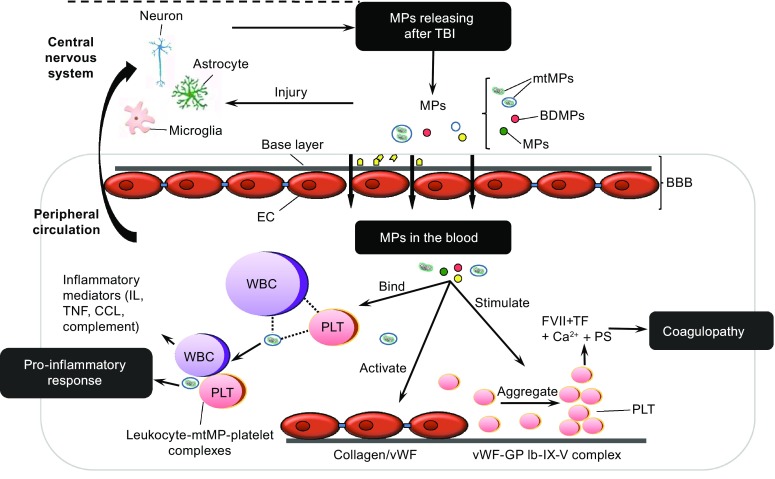Figure 2.

A schematic illustration of MPs-mediated intercellular communication in TBI. Upon injury, neurons, microglia cells, and astrocytes release MPs into peripheral blood through disrupted BBB. These BDMPs activate platelets and promote platelet adhesion to the activated endothelium and exposed subendothelium at sites of vascular injury through multiple ligand-receptor interactions. Activated platelets also provide a PS-rich surface on which tissue factor forms a complex with coagulation factor VIIa to initiate the extrinsic pathway of coagulation. MPs interact with WBCs to promote inflammation
